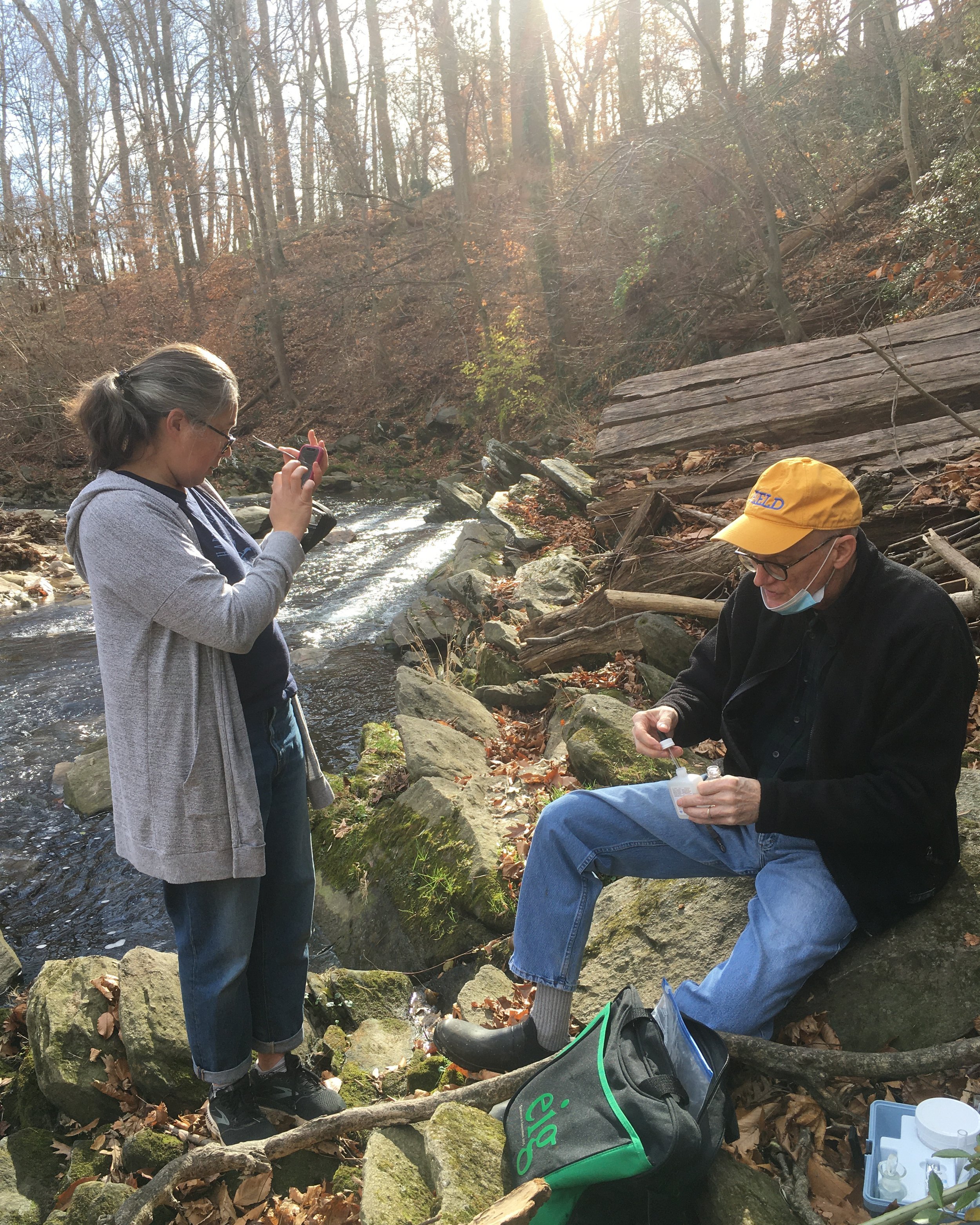Snow plow painted by LFWA volunteers to raise public awareness of the threat road salt presents to aquatic life. Plow designed by Toby Kathan.
Volunteers testing creeks in the Little Falls watershed found that salt readings in area creeks spiked to toxic levels after snow storms, but they did not always return to safe levels after the events. April readings showed that chronic toxicity (over 230 parts per million) remains in 3 locations on the Little Falls Branch - by the Somerset Pool, by the Willard Avenue Neighborhood Park, and by Westbrook Elementary School. Chronic toxicity means that the habitat of the aquatic life that depends on fresh water is compromised to the point where they cannot survive.
Results from April 2025 Salt testing show chronic toxicity is still a problem at three locations along the Little Falls Branch despite the fact that the last snow event was over a month ago.
Since December 2024, trained LFWA volunteers have tested 8 sites along the Minnehaha, Little Falls and Willett Branch creeks before and after snow storms as well as once a month in the warmer months. The data shows that we have a serious salt pollution problem in the watershed. Most of our sites experienced spikes to levels of over 860 PPM after snow events. Chloride is naturally present in the environment. Chloride concentrations between 1 and 100 ppm (mg/L) are “normal” in most freshwater waterways. But levels over 230 PPM are considered chronic toxicity as aquatic organisms cannot tolerance this much salt for more than a few days. Levels over 860 are considered acute toxicity as the organisms can only survive for several hours at this level.
Read our report on the state of Salt in the watershed HERE.
Problems with Salt Pollution
High levels of salt also have inverse impact on human health, contamination our drinking water. And there are costs to infrastructure. Chloride can corrode metal, concrete, bridges, vehicles, drainage systems, highway fixtures and drinking water pipes. Izaak Walton league estimates that the long term costs associated with salt pollution effects on the infrastructure will cost between $16 - $66 billion a year, if we continue to use salt at the current rate.
There is also a concern about salt in the water comes from local waterways. WSSC, which treats drinking water for Montgomery County has seen an alarming rise in the salinity of the Potomac River - a 41% increase in the past 30 years. “WSSC Water closely monitors the water entering our Potomac and Patuxent Water Filtration Plants. Over the past 30 years, the average salt levels (sodium and chloride are the two components of salt) have been steadily increasing. The levels peak in the winter months and are higher in years where we experience more winter weather events. Because there is no economically feasible way to remove salt during filtration, higher levels end up in the drinking water.” https://www.wsscwater.com/saltwise
For an excellent review of the concerns about salt pollution, there is this article from the Izaak Walton Salt Watch program.
LFWA Salt testing program
Salt testing sites in the Little Falls watershed.
LFWA has been testing four streams in our watershed for salt pollution since 2021. We have one site on the Glenbrook tributary, one site on the Willett Branch, one site on the Minnehaha creek and 5 sites long the Little Falls Branch.
The most up-to-date readings can be found HERE along with information about our salt testing program.
thank you
Thank you to Woody Stanley and our salt volunteers for their hard work on documenting the problem of road salt in the watershed.
This program is run in partnership with Izaak Walton Salt Watch.







